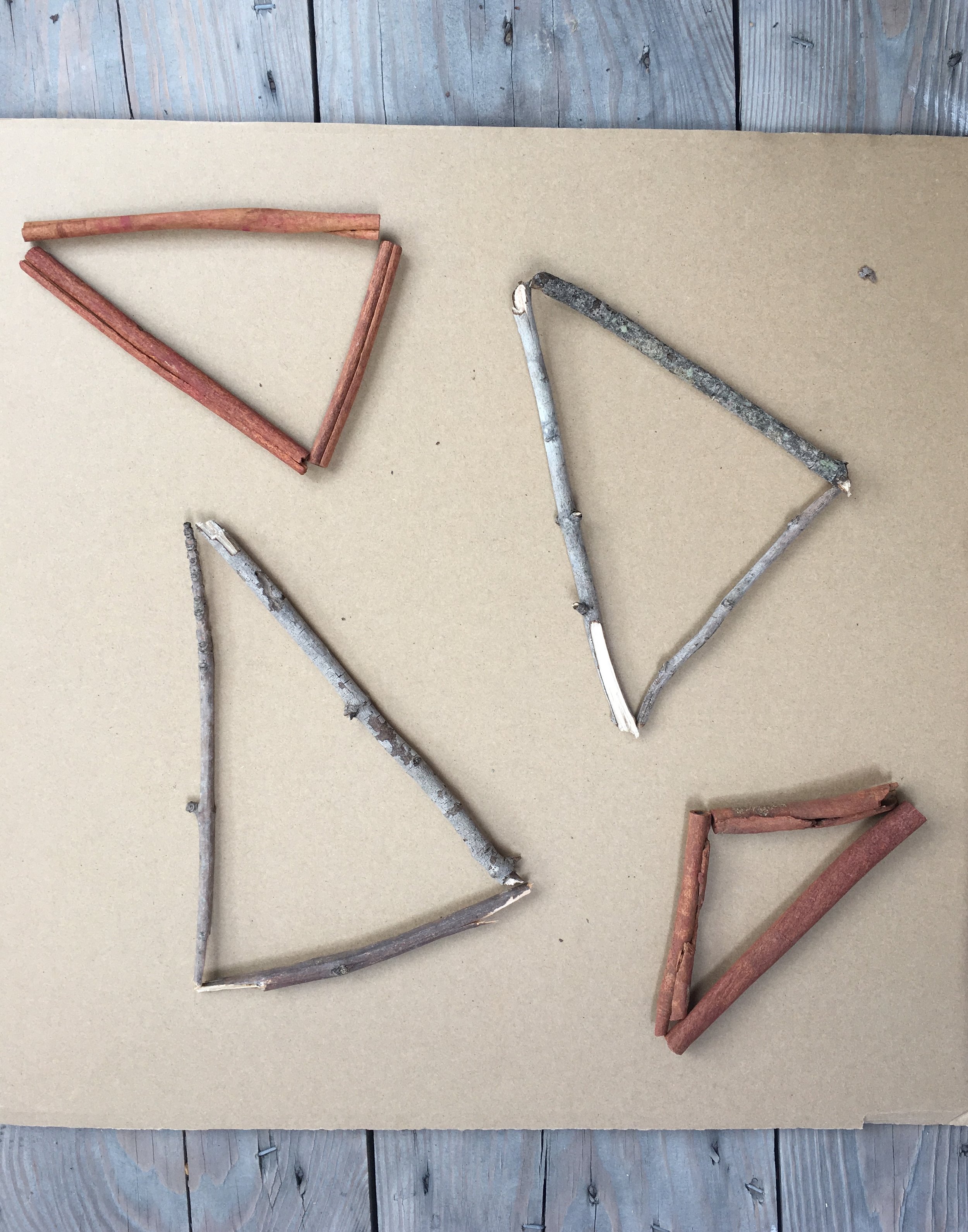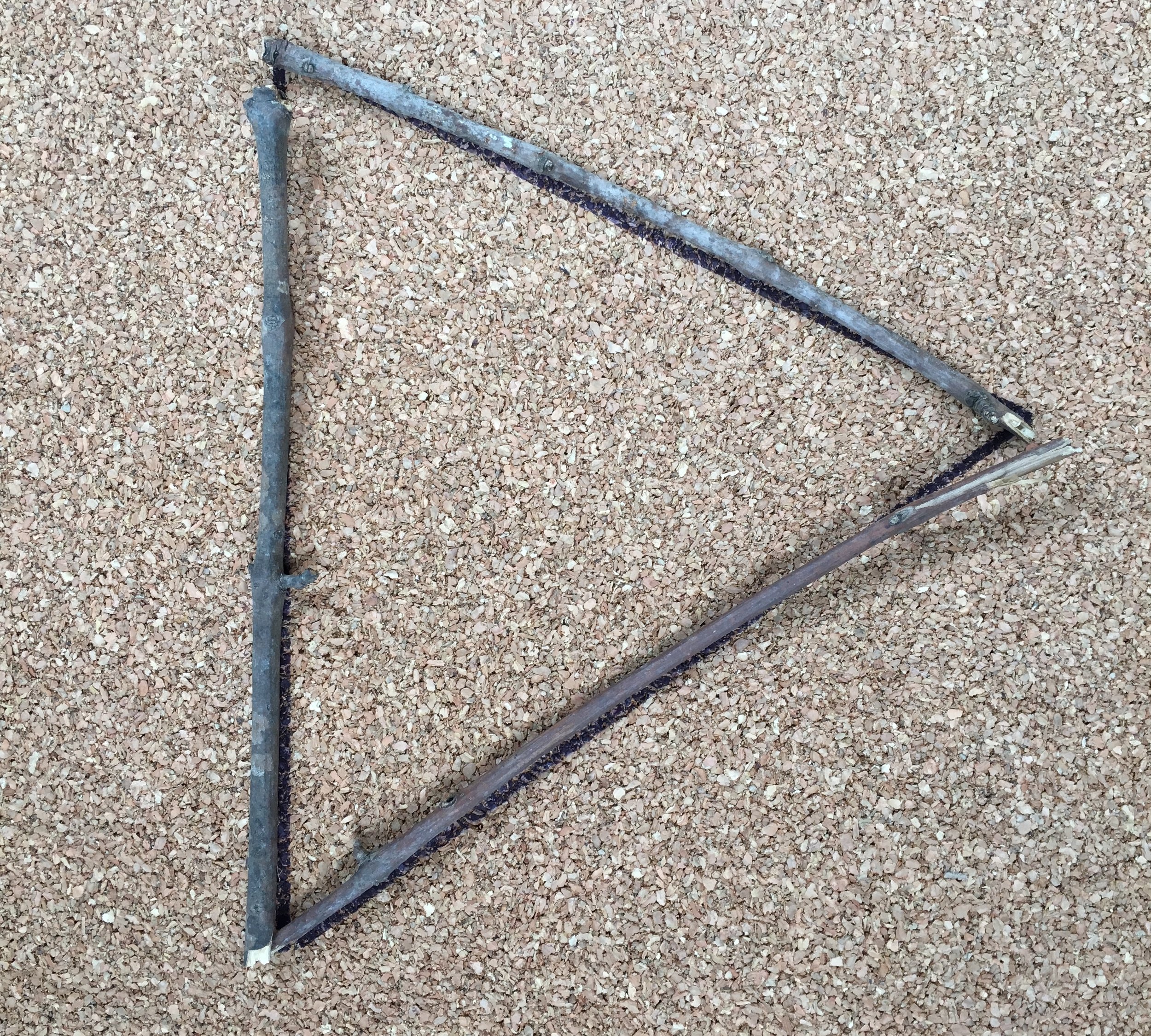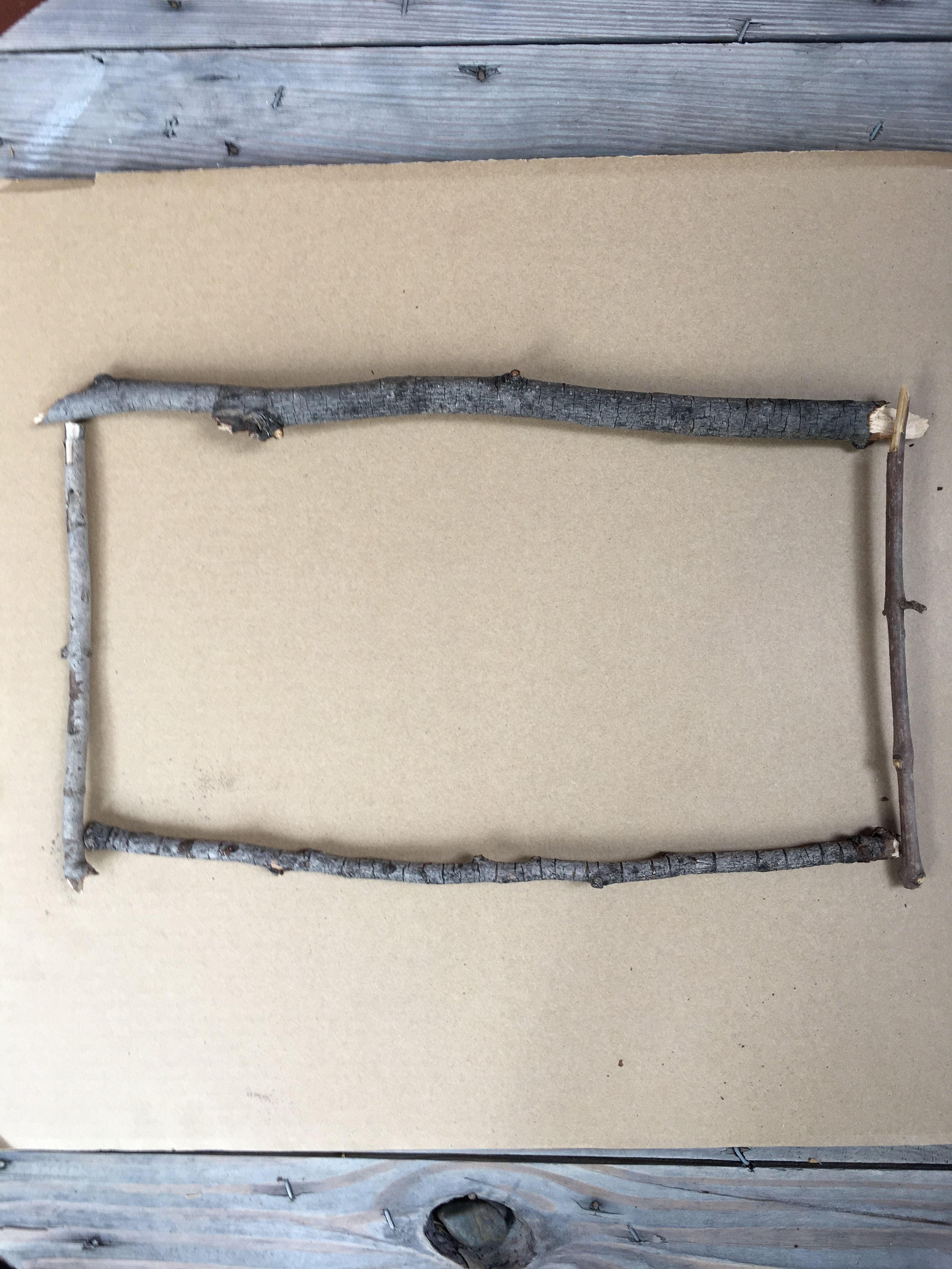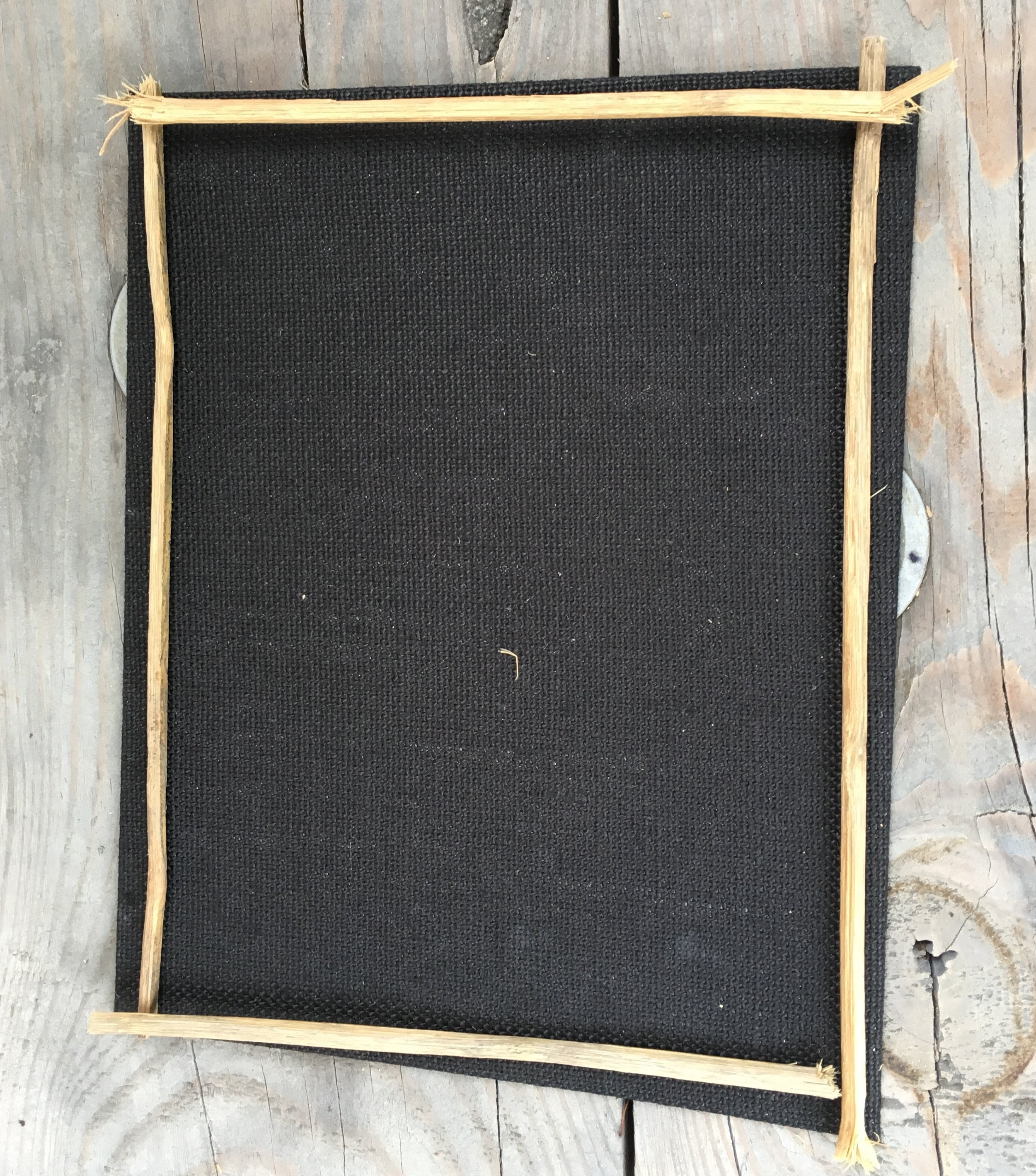“Shapes can be defined and classified by their attributes”
-Erikson Institute’s Early Math Collaborative
My preschool class loved to play I-spy. Sometimes we played with color, “I spy something red” and sometimes we played with shapes, “I spy a triangle.” Playing this game really helped the children to notice the shapes all around. I believe one of the most engaging ways to learn about shape is exploring our everyday environments. Books like Shapes, Shapes, Shapes by Tana Hoben and , Circles, Stars, and Squares: Looking for Shapes by Jane Brocket inspire us to explore shapes in our surroundings. However, researchers recommend parents and teachers do more than name shapes, they need to talk about the key features of each shape.
In this activity I encourage you to go beyond simply finding shapes. Use sticks and other natural materials to create shapes and talk about their features. Counting sides and corners helps children to understand what makes a triangle, square, rectangle and other shapes. This sheet created by Reed & Young, 2007 is a wonderful guide.
Playful Invitation
1. Prepare: Gather sticks or other long (and fairly straight) natural items of varying sizes. Cut or break some sticks to be the same length (this is important for making squares and equilateral triangles). Also use chalk, cardboard, paper or other materials as shape guides.
Observe the child throughout the interaction. Use the Invitation to Play Documentation Tool to collect data.
2. Invite: I would really like to see what shapes you can make with these things. OR Show me how you could use the materials to make a triangle/ square/ rectangle etc.
3. Play: While the child works ask, Tell me about the shape you’re making? How do you know its a triangle/square/rectangle?
Model thinking: I know that triangles always have three straight sides, so let’s count the sides. 1,2,3..so it is a triangle. OR Wow, this looks a lot like a square, I know squares have four sides, four corners, and all the sides are all the same length. Let’s count the sides. 1,2,3,4. Are they all the same length?
Continue creating shapes and talking about their features.
4. Reflect and assess: Was the child able to identify and create shapes? What shapes will you continue to work on? What new shapes can you introduce?
Ready: Children are ready to talk about the attributes of shapes once they can match two identical shapes and are beginning to identify basic shapes like circles, squares, triangles and rectangles in their environment.
Ready to move on: The child easily identifies circle, square, triangle and rectangle. Also, the child can create shapes using a guide, or independently.
Extend: Continue to present shapes in different sizes and orientations. Continue to talk about the attributes of each shape. Ask the child why it is a certain shape and listen to his/her reasoning.
Try and make a circle with small items, then try and make it with sticks. Talk about the difference and how circles can’t be made with straight lines.
Begin looking for 3-dimensional shapes in the environment and notice how squares, circles, triangles and rectangles make up the faces of these shapes.
IMPORTANT: Creating accurate shapes relies on precision. Most natural materials are slightly imperfect making it difficult to create perfect shapes. At this point in learning, focus on the sides and corners, counting, and learning the attributes of each shape. A follow up to this invitation might include a discussion about what a “straight line” is and comparing shapes with non-shapes that have curved sides. i.e. a triangle vs. a slice of pizza.
*Also a square is a special kind of rectangle with four square corners and four sides that are the same length.”
Math language
Classify- to put into categories
Attributes- characteristic of an item. Examples include color, shape, texture, size, type, number, etc.
Equilateral triangles-a triangle where all three sides are exactly the same length.
Resources
National Council of Teachers of Mathematics. (2006). Curriculum focal points*
Reed, K.E. & Young, J.M. (2017)*
*full citation can be found on the Research Page











